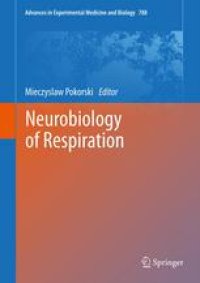
Ebook: Neurobiology of Respiration
- Tags: Biomedicine general, Medicine/Public Health general, Neurosciences, Cell Biology
- Series: Advances in Experimental Medicine and Biology 788
- Year: 2013
- Publisher: Springer Netherlands
- Edition: 1
- Language: English
- pdf
Respiration is an area of the medical study that undergoes fast developments. A better understanding of the neural and cellular mechanisms underlying respiratory disorders and lung function is essential for the evidence-based pharmacotherapy and for optimizing the patient care and prophylactic measures to improve the health and quality of life. This comprehensive book is a blend of basic and clinical research. The book is thought to promote the translation of science into clinical practice. The book presents an update on the areas of current research and clinical interest in the neurobiology of the respiratory system. Recent innovations in detection and management of respiratory diseases are described. The book will be a base of reference in the field of respiration for years to come and a source of future research ideas. This book is a required text for respiratory scientists, neuropathologists, and for clinicians searching for ‘bench to bedside’ treatments of lung diseases.
Respiration is a field of the scientific study that undergoes fast developments. A better understanding of the cellular and neural mechanisms underlying respiratory disorders and lung function is essential for the use of the evidence-based therapy and for optimizing the patient care and prophylactic measures. This book provides a comprehensive update on the basic and clinical respiratory research, and on the detection and management of respiratory pathologies. The molecular signaling lies at the base of the pathophysiology of the respiratory system and therapeutic interventions. The neurobiological studies have just started to unravel the complexities of how the molecular signals are translated into respiratory regulation in health and disease. This book helps translate non-clinical findings into clinical applications. It provides diagnostic tips that help the clinician in qualified decision making and describes novel biomarkers that facilitate diagnosis. The book also tackles the importance of the knowledge of the psychosomatic background of disease in getting the optimal patient outcome. The interventional epidemiological studies included in the book correspond to translational medicine that encompasses the basic and social sciences with the goal to improve the health and quality of life. The chapters presented in the book describe the findings of original studies, which were thoughtfully planned and executed in a controlled manner. The book satisfies a requirement for staying abreast of the latest developments in both scientific and clinical sides of respiratory neurobiology. The book will be an enduring base of reference in the field of respiration for years to come. This book is a required text for respiratory scientists, neuropathologists, and for clinicians searching for ‘bench-to-bedside’ treatments of respiratory disorders.